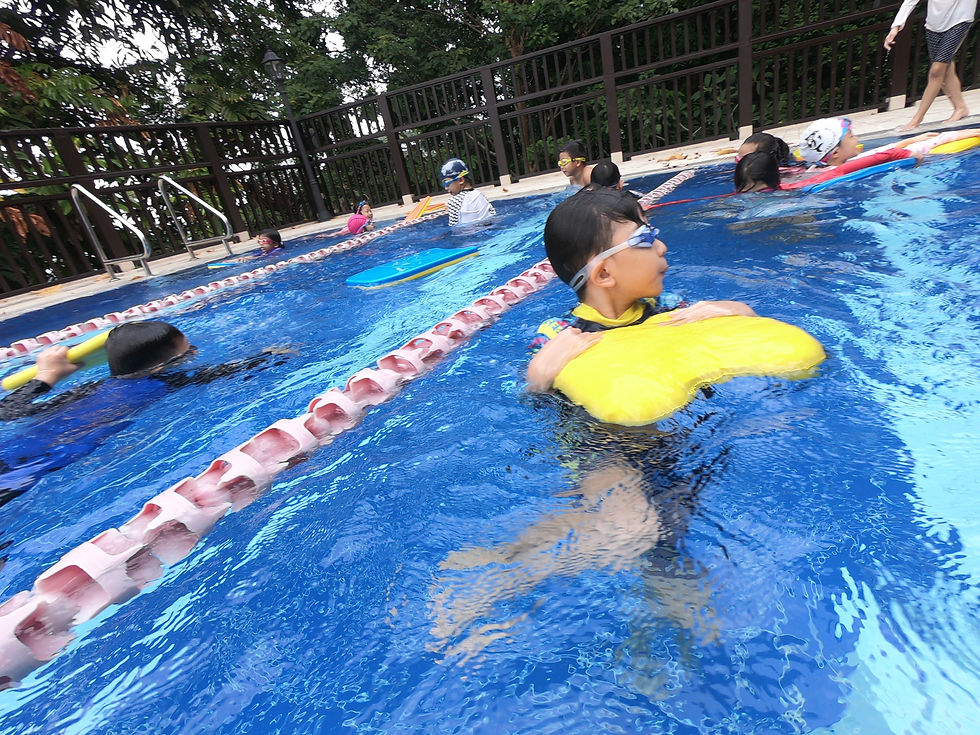How to Handle Currents During a Triathlon Swim Leg
- SG Sink Or Swim

- 1 day ago
- 3 min read

The swim leg of a triathlon presents unique challenges — especially when currents come into play. Whether you're racing in a river, bay, or ocean, understanding how to swim efficiently in moving water is essential for conserving energy, staying on course, and setting yourself up for a strong bike and run.
In this guide, we’ll cover how to prepare for, adapt to, and overcome currents during your triathlon swim leg — whether they’re pushing with you, against you, or pulling you sideways.
🌊 Why Currents Matter in Triathlon
Unlike the predictable environment of a pool, open water courses are subject to:
Tidal changes
River flows
Wind-driven surface currents
Rip currents or undertows (in ocean swims)
Even mild currents can disrupt your stroke rhythm, navigation, and pacing, especially for beginners or those unfamiliar with open water.
🧠 Tips for Handling Currents on Race Day
1. Know the Conditions Before You Swim
Preparation starts with research:
Study the course map to identify current direction.
Ask locals or race directors about tidal shifts or current hotspots.
Check race morning forecasts for wind, swell, and water flow.
💡 Knowing whether the current will help or hinder you allows you to plan your effort and pacing more effectively.
2. Practice Sighting Early and Often
Currents can pull you off-course — especially in point-to-point swims.
Lift your head to sight every 6–10 strokes.
Use tall, fixed landmarks (like buildings or buoys) instead of just surface markers.
If swimming into the sun, sight to the side occasionally.
✅ Frequent, efficient sighting prevents zig-zagging, which wastes energy.
3. Swim Wide if the Current Is Strong
In looped or rectangular swim courses, if the current is pushing one direction:
Swim slightly wide on the leg with current assistance.
Swim closer to the buoy line on legs where you're fighting the current.
This strategy reduces the distance you’re pushed off-line and helps keep you in calmer water.
4. Shorten Your Stroke Against the Current
Swimming into a current? Adapt your stroke:
Increase stroke rate slightly to maintain forward momentum.
Reduce glide and keep hands entering earlier to fight drag.
Engage your core and legs more to drive each pull forward.
✅ A higher turnover helps you stay efficient without overexerting.
5. Use Drafting to Your Advantage
Positioning behind or beside another swimmer reduces water resistance.
Tuck in behind their feet or to the side of their hip.
Let the lead swimmer "break" the current for you.
Be courteous — don’t grab feet or cause contact.
💡 Strategic drafting can conserve energy, especially against the flow.
6. Adapt Your Breathing Side
If wind and waves are coming from one direction:
Breathe away from the chop to avoid swallowing water or breaking rhythm.
Use bilateral breathing in training to prepare for flexibility on race day.
7. Don’t Panic in Side Currents
Side or cross-currents may slowly pull you off-course. Here’s how to adjust:
Continue sighting frequently.
Angle your swim line slightly into the current (like a ferry crossing a river).
Trust your navigation and avoid overcorrecting with large zig-zags.
✅ Calm, calculated adjustments beat frantic corrections.
8. Conserve Energy for the Bike and Run
Avoid burning out in the swim:
Accept that you may go slower against the current — don’t overexert trying to match pool pace.
Use drafting, sighting, and smart pacing to stay steady and strong.
If the current is with you, capitalize with smooth, long strokes and relaxed breathing.
💪 Bonus: Train for Currents Before Race Day
Dryland Prep:
Include core workouts to stabilize your stroke in rough water.
Practice breath control and tempo changes for adapting to different water speeds.
In-Water Prep:
Train in open water when possible.
Simulate sighting, drafting, and stroke rate changes in your pool sets.
Use resistance tools (like parachutes or tether cords) to mimic current conditions.
🏁 Final Thoughts
Currents can feel intimidating — but they don’t have to derail your triathlon swim. With preparation, awareness, and technique adaptations, you can stay efficient, calm, and competitive no matter what the water throws at you.
Remember: work with the water, not against it.





Comments